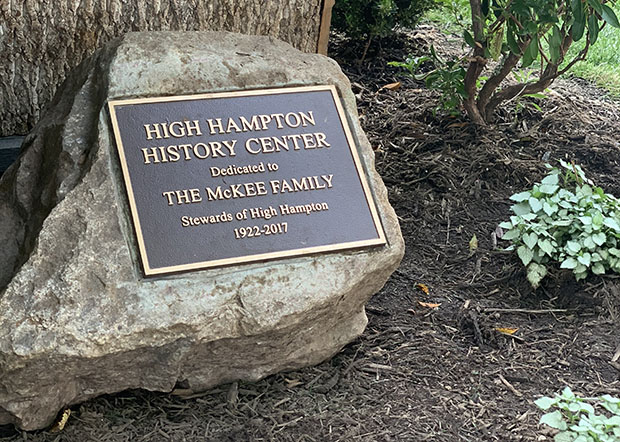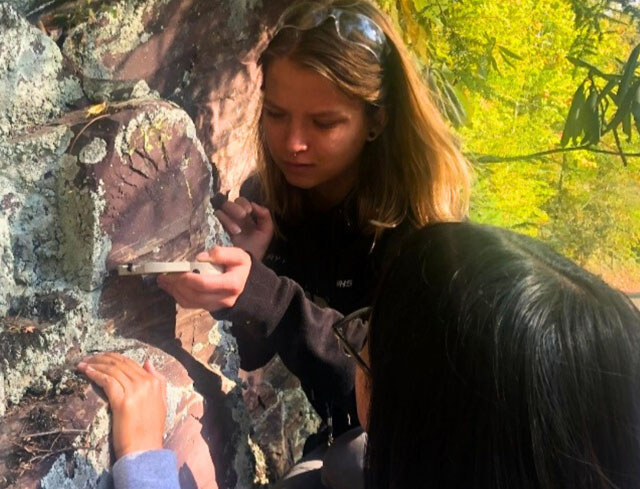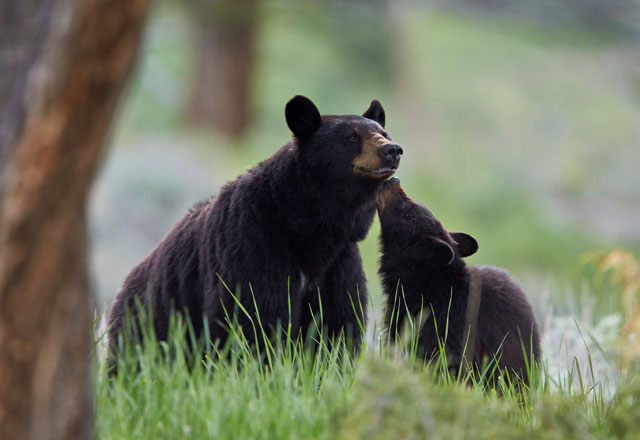Natural Luxury
04 Aug 2021
Stewardship partners of the Cashiers Designer Showhouse
By Kat Ford

For centuries, naturalists have explored the southern Appalachian Mountains, one of the most biologically diverse regions in the temperate world. In his 1791 writings, “Travels of William Bartram,” the Philadelphia-born naturalist wrote of the plants and animals he saw. Biodiversity is extremely high in terms of both the variety of different species and the abundance of each species. Nearly 10,000 species are already known to exist here, with more discovered each year–some of which are new to science. Additionally, the Highlands-Cashiers Plateau sits at the headwaters of six different watersheds. What we do on the plateau is felt throughout the Southeast. The beauty of this area has a long history of inspiring stewardship. The writings of Horace Kephart and the photography of George Masa were used to support the effort in creating the Great Smoky Mountains National Park. John D. Rockefeller Jr. donated $5 million to purchase the lands that later became part of the park after seeing Masa’s photographs.
When deciding to go glamping for their 24th annual Cashiers Designer Showhouse, the Cashiers Historical Society (CHS) knew they wanted to share all elements of Cashiers’ luxury. That includes both the design of and inside a home and the surrounding natural beauty. CHS is partnering with the following stewardship partners during the two-week event; you can hear representatives from these organizations speak in panel discussions regarding the stewardship of our lush natural resources and adventure down their Naturalists’ Trail to learn more!
The Blue Ridge Bartram Trail Conservancy
The mission of the Blue Ridge Bartram Trail Conservancy is to maintain the 110-mile-long Georgia-North Carolina Bartram Trail and to promote the legacy of 18th-century naturalist William Bartram, who explored the cultural and natural world of the Blue Ridge mountains in 1775.
www.ncbartramtrail.org
Duke Energy
Duke Energy serves 7.9 million customers in North Carolina, South Carolina, Florida, Indiana, Ohio and Kentucky and collectively owns 51,000 megawatts of energy capacity. The company began its operations in the Carolinas as a hydroelectric company. The 11 reservoirs for the company’s seven Nantahala hydro stations form most of the region's lakes. Water released when power is generated creates predictable whitewater flows for fishermen, boaters and paddlers. Duke Energy is executing an aggressive clean energy strategy to create a smarter energy future for its customers and communities – with goals of at least a 50 percent carbon reduction by 2030 and net-zero carbon emissions by 2050. Hydropower, solar and other renewables will continue to play a significant role in achieving these goals.
www.duke-energy.com
Highlands Plateau Audubon Society
The mission of the Highlands Plateau Audubon Society is to provide opportunities to enjoy and learn about birds and other wildlife and to promote conservation and restoration of the habitats that support them.
www.highlandsaudubonsociety.org
Highlands Biological Foundation
Highlands Biological Foundation’s mission is to foster research and education focused on the rich natural heritage of the Highlands Plateau while preserving and celebrating the integrity of the “biological crown of the southern Appalachian Mountains.” Its vision is to inspire present and future generations to preserve and protect the unique environment of the Highlands Plateau. They recently installed a pollinator garden on the north campus of the Highlands Biological Station containing over 75 different species of native plants; over 10,000 plants were installed in the garden, designed to be both an aesthetically pleasing and attractive habitat for pollinator species. Native plants supply not only food for hungry caterpillars but also nectar and pollen for mature pollinators such as native bees, butterflies, moths and hummingbirds.
www.highlandsbiological.org
Highlands-Cashiers Land Trust
Since 1909, Highlands-Cashiers Land Trust (HCLT) has been conserving some of the world’s oldest mountains. Our lush forests and cool waterways are home to a plethora of plants and animals, some of which occur nowhere else. HCLT helps protect these places by working with private landowners to safeguard their land in perpetuity. They have conserved over 3,500 acres of ecologically rich lands in over 100 places. HCLT is a nationally accredited 501(c)3 charity that depends on the support of individual donors. To learn how they accomplish their mission to conserve valuable natural resources for all generations, visit their website today.
www.hicashlt.org
The Ruffed Grouse Society
The Ruffed Grouse Society & American Woodcock Society (RGS & AWS) unite conservationists to improve wildlife habitat and forest health. Since 1961, RGS has promoted stewardship for our forests, our wildlife and our future. Their vision is to create landscapes of diverse, functioning forest ecosystems that provide homes for wildlife and opportunities for people to experience them.
They collaborate with federal, state and local partners to increase quality habitat for grouse, woodcock and hosts of other wildlife species dependent on diverse forest landscapes. They are actively engaged with the Nantahala and Pisgah National Forests, North Carolina Wildlife Resources Commission and private forest landowners across western North Carolina to support healthy forests and abundant wildlife across the landscape. They are building a future where humans and wildlife can live and thrive together in the forests we call home.
www.ruffedgrousesociety.org
Trout Unlimited
Trout Unlimited exists to bring together diverse interests to care for and recover rivers and streams so that our children can experience the joy of wild and native trout and salmon. One of the major projects for TU in the Southeast is the Sky Island initiative, a plan to improve river and stream health in the Cullasaja, Tuckasegee, Pigeon, French Broad, Davidson and Mills River watersheds. Work for this project includes engaging community members to collect vital data on stream health issues, working to solve warmwater issues caused by dams, removing barriers to fish passage, reducing the amount of sediment getting into waterways and working with agencies to reintroduce native brook trout. While a majority of the work has taken place on public lands, private landowners can connect with TU to play a key role in bettering their home waters as well.
www.tu.org
Witherspoon Platt + Associates
Witherspoon Platt + Associates, out of Brevard, NC, is a realty company focusing on real estate sales, conservation and partnerships between private landowners, land trusts and government land agencies. John Witherspoon, their broker-in-charge, has over 20 years of experience in conservation and real estate and has used his deep understanding of conservation and the landscape of the Blue Ridge to help connect buyers and sellers with their dream properties: private mountaintop estates, large family compounds, family farms, equestrian properties, riverfront properties and secluded forests. For nearly 25 years, they have worked with private landowners to permanently protect our vulnerable Appalachian landscapes through conservation easements and have, to date, helped their clients protect over 8,700 acres on over 50 projects across western North Carolina. Along the way, the company has also brokered deals to add land to national and state forests by using their extensive contacts and relationships in the land trust and government land communities.
www.wpanc.com













